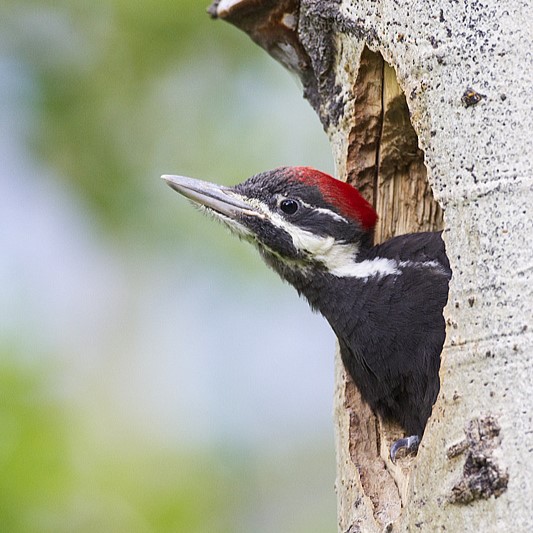What is a cavity-nesting bird?

Pileated Woodpecker by Gerald Romanchuk
BY MYRNA PEARMAN
Close your eyes and imagine a bird nest. Chances are you envision a bowl-like nest made out of sticks, grass, and mud. Many birds make this type of nest, called an open-cup nest. Some other bird species are cavity-nesting birds. Instead of building a typical cup nest, cavity-nesting birds lay their eggs inside a cavity, which is another word for hole. For birds, a nesting cavity is a hole that they can find in a tree, riverbank, cliff, or human-made structure (nestbox, hole in a building, mailbox, equipment, or even inside an old rubber boot!). Cavities offer extra protection from predators and weather.
There are primary cavity-nesting birds and secondary cavity-nesting birds. A primary cavity-nesting bird is one that can excavate (dig out) its own nest site. Woodpeckers, nuthatches, and chickadees all excavate cavities in trees; kingfishers and some species of swallows will use their feet to dig cavities in clay or sand banks. Secondary cavity-nesting birds also need to nest in a cavity, but do not have the adaptations to create their own nest. So they need to find an existing natural cavity (like a hole in a sandstone cliff), a human-made cavity, or a cavity left behind by a primary cavity-nester. Mountain bluebirds, tree swallows, house wrens, common goldeneyes, buffleheads, American kestrels, and northern saw-whet owls are some examples of secondary cavity-nesting species.
This article originally ran in Nature Alberta Magazine - Summer 2022.
